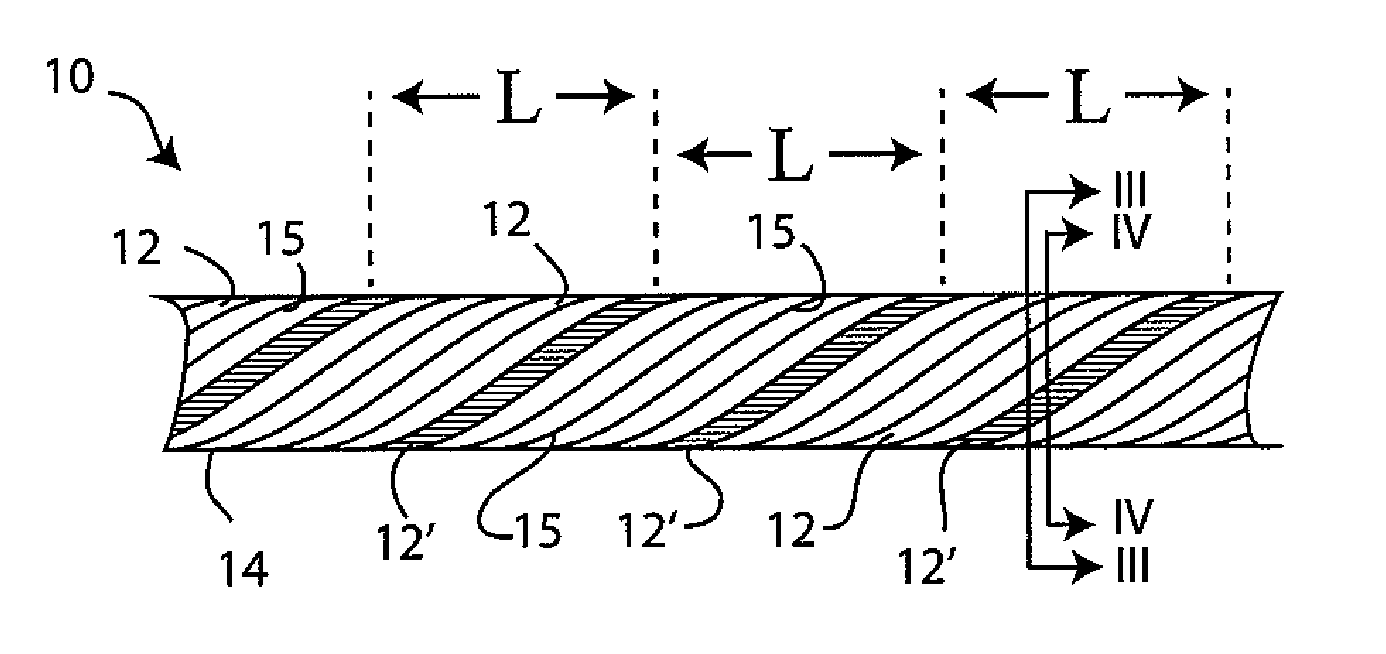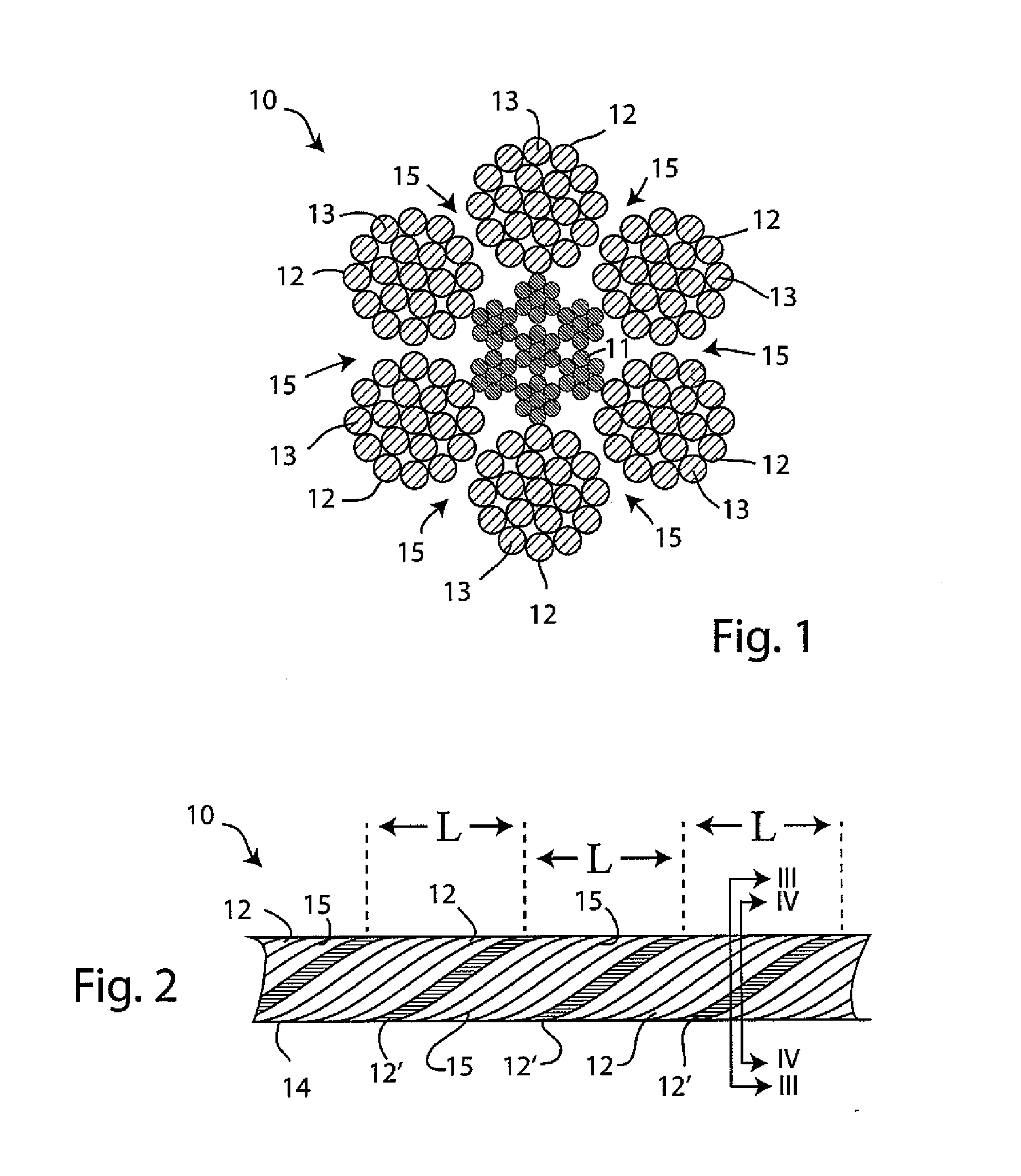Measurement of Lay Length of Wire Rope
a technology of lay length and measurement method, applied in the direction of electric/magnetic measurement arrangement, magnetic field measurement using flux-gate principle, using electrical/magnetic means, etc., can solve the problems of wire ropes that are often of considerable length, carry considerable loads, and have to be prone to failur
- Summary
- Abstract
- Description
- Claims
- Application Information
AI Technical Summary
Benefits of technology
Problems solved by technology
Method used
Image
Examples
Embodiment Construction
[0027]FIGS. 1 and 2 of the accompanying drawings show a cross-section of one form of wire rope 10 having a core strand 11 covered by six spirally wound outer strands 12 typically used for mining operations, although it should be kept in mind that wire ropes of other designs may alternatively be employed, e.g. those having more or fewer external strands, more or fewer core strands 11, and strands of non-circular cross-section. The core strand 11 and the external strands 12 are each made up of bundles of individual metal wires 13 twisted together. As best seen in FIG. 2, the outer surface 14 of the rope is formed by the external strands 12 separated by grooves 15 between the strands, thereby causing the rope to have a spirally grooved outer surface undulating in surface height from the central axis 19 (see FIG. 4) of the wire rope. Each of the external strands 12 twists around the rope in spiral loops separated from each other along the rope by the five other strands 12. In FIG. 2, on...
PUM
| Property | Measurement | Unit |
|---|---|---|
| length | aaaaa | aaaaa |
| length | aaaaa | aaaaa |
| surface height | aaaaa | aaaaa |
Abstract
Description
Claims
Application Information
 Login to View More
Login to View More - R&D
- Intellectual Property
- Life Sciences
- Materials
- Tech Scout
- Unparalleled Data Quality
- Higher Quality Content
- 60% Fewer Hallucinations
Browse by: Latest US Patents, China's latest patents, Technical Efficacy Thesaurus, Application Domain, Technology Topic, Popular Technical Reports.
© 2025 PatSnap. All rights reserved.Legal|Privacy policy|Modern Slavery Act Transparency Statement|Sitemap|About US| Contact US: help@patsnap.com



